Our Tips on Where to Eat in Goa, India
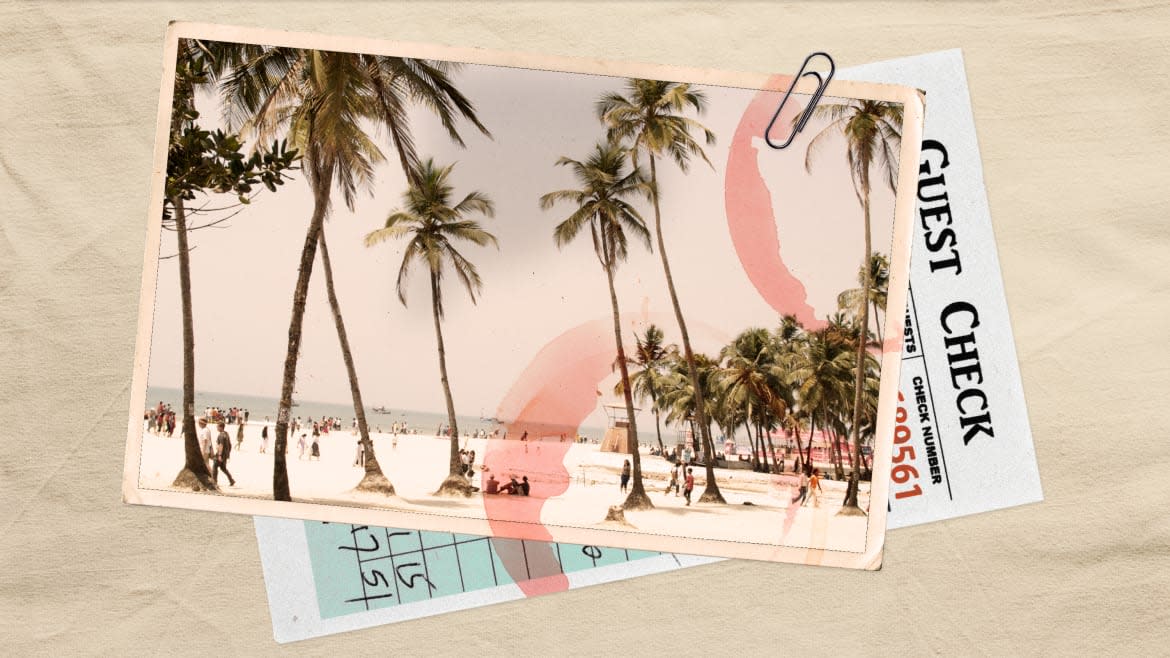
This is the latest for our destination dining guide, Eat Sheet. For more on how we do these a bit differently, head here first.
There hasn’t been a better time to be a gourmand in Goa. One of India’s smallest states (mistakenly treated as a village or city) is seeing a rapid surge in new restaurants, bars, and food spots catering to the influx of people who’ve settled here post the pandemic. It’s changed the culinary landscape of the state, sidelining Goan food.
The local cuisine of the state is a delicious amalgamation of local produce (like fish, coconuts, kokum, chillies) influenced by 450 years of colonial rule. To a Goan, local food reigns supreme. On any given day, we will choose our fish-curry-rice over a ramen bowl or mezze platter, and not just because the former is more affordable.
Goa, today, is known to be a place that welcomes experiments and diversity, and is even willing to cater to tourists’ tastes. This list is but a humble guide to showcase this diversity, and true blue Goan food, as it was.
IF IT AIN'T BROKE
Café Tato
Café Tato (or Tato’s) has been feeding Goans their staple breakfast of bhaji-pao or bhaji puri and chau (tea), for over a century. It still remains a popular pitstop, at breakfast or at tea time, which is why you will often be sharing a table with strangers. There’s no time for discomfort as everyone is there just to eat; rarely do people linger. Though the menu is vast, most come for the bhaji. There is patal (dried white peas curry), sukhi (a dry preparation made with potatoes), salad (onion and tomatoes), almi (mushroom), biya (cashewnuts), alsande (cow pea), or sangam (mixed bhaji). These come in small steel bowls, accompanied by your choice of bread — deep fried puris, buns (deep fried bread made with bananas) flecked with cumin, or pao. It is simple, homely, and filling food that doesn’t break the bank — you can eat a filling meal for less than Rs 100.
MAKE IT QUICK
D’Silva Fast Food
At the tourist-friendly Miramar Beach, food is but an inevitable conclusion to evening walks, and chasing sunsets. If, like the proverbial chicken, you cross the road, you are rewarded with Goa’s favourite sandwich: cutlet pao. D’Silva Fast Food, located on the ground floor of the family home, is where you get one of the better versions of this street staple. A cutlet is a thin piece of beef, tenderised and marinated in spices, coated with rava (semolina) and fried. There are chicken and fish cutlets too, but purists will only talk about beef. This cutlet then finds a home between two slices of pao, sometimes poee, along with shredded cabbage and a generous helping of chicken curry serving as the sauce. Together, they form a crunchy, meaty symphony. If the cutlet pao doesn’t satiate hunger pangs, there is sorpotel (a tangy pork stew), cafreal (a spicy, dry green chicken preparation), beef roast, beef chilly fry (made with lots of onions), fish cutlets and pork chops too.
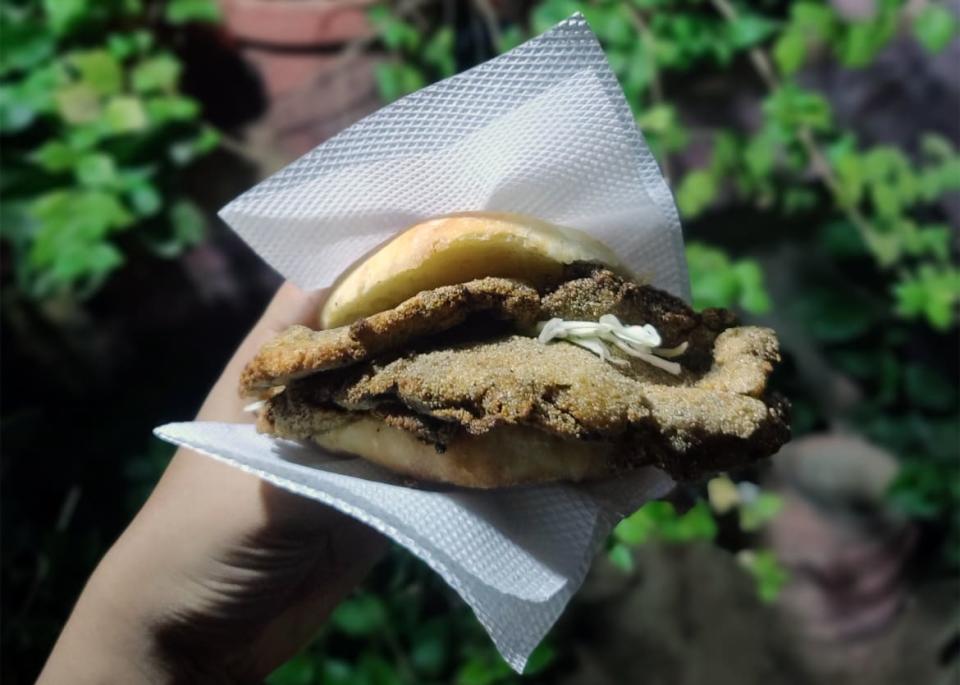
FANCY SCHMANCY
Cavatina Cucina
It’s commonly known that Goans like their food untouched. We don’t like experiments or modern adaptations. Then we have chef Avinash Martins, who is trying to change that mindset. Post the pandemic shutdown, he turned his Continental restaurant into a Goan one, serving what he calls reimagined Goan. It means he takes familiar dishes and twists them, drawing on different cooking techniques, and innovative plating to showcase this humble cuisine in a lovingly incandescent light. The favourite tambdi bhaji (red amaranth) finds its way into a spanakopita with cashew butter; mushroom xec xec (mildly spiced curry) becomes a bisque with mushroom koji galouti; there’s a cafreal nest with pulled chicken and quail eggs; and koyloleo (rice pancakes) become tacos with prawn balchao (prawns pickled in a spicy, vinegary masala). The tasting menu comes with postcards from his suppliers: farmers, poders (bakers), fishermen, toddy tappers, coconut pluckers, and more. The beauty of his food is that, beyond the frills of the presentation and accompaniments, the taste is unmistakably Goan.
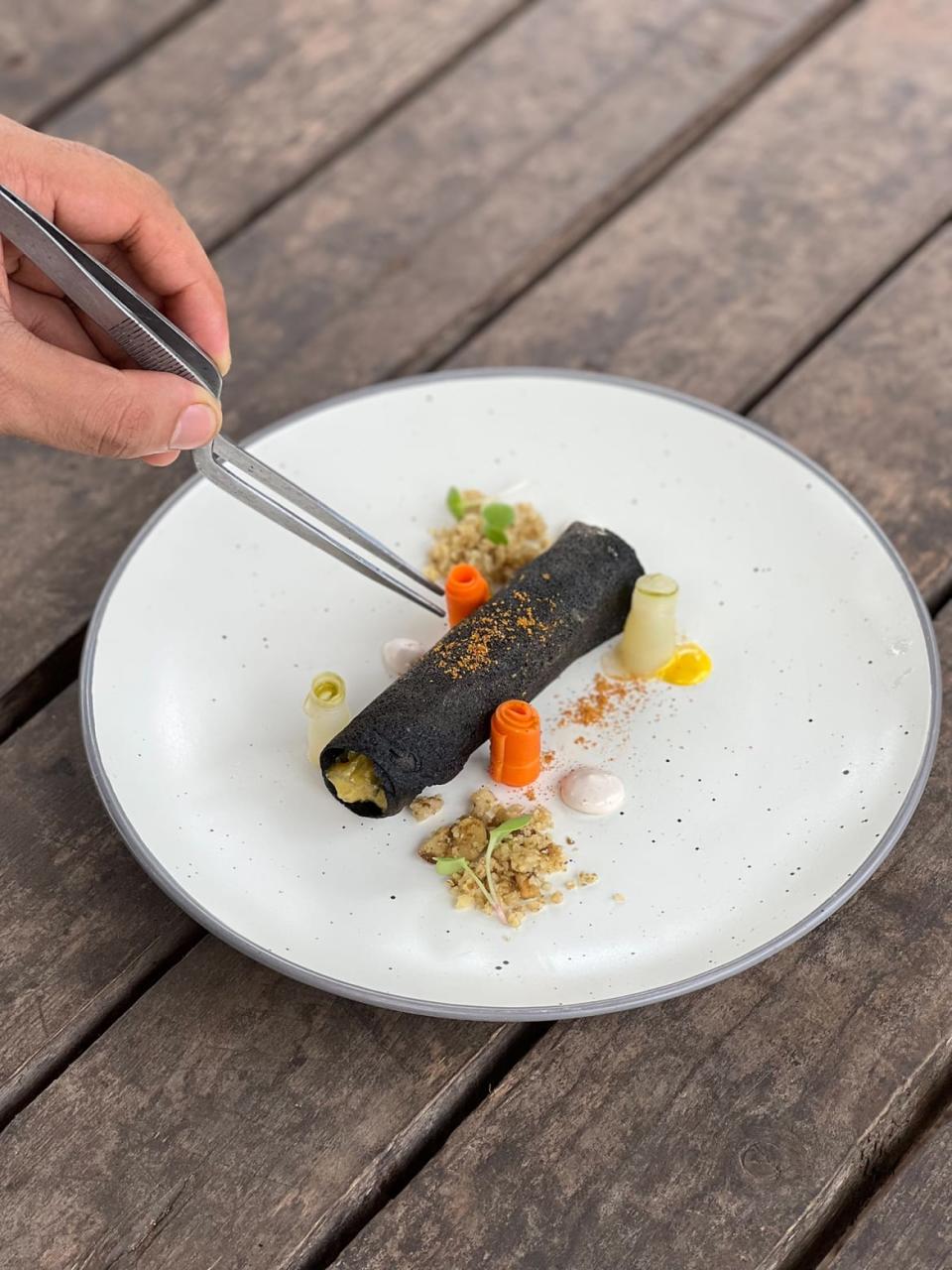
LOOKS CAN BE DECEIVING
Star Bar
It’s a well-known secret in Goan circles that a bar is where you can find the best, and cheapest seafood. Star Bar is no exception. At the end of a narrow dirt path, in a small clearing, sits this tiled roof structure. The walls are plastered with Coca-Cola ads and peeling paint. Inside are plastic tables and chairs and a cabinet filled with dusty liquor bottles. Outside are more tables, shielded with plastic umbrellas. Even though it’s situated by the Mandovi River, people don’t go here for the view. They go to eat fish: filets of kingfish or giant sea perch the size of one’s arms, fat prawns with their heads still intact, rings of squid, stuffed mackerels and silver fish fried till crisp. The fried fish comes with a crisp rava batter, a wedge of lime, and an onion and cabbage “salad.” The other option is a fish thali, a one-plate meal with fried fish, a spicy fish curry, a dry shellfish dish, some bhaji, salad, and pickle. The fish is fresh (they will tell you it was caught that morning, coming in from the river), the service is quick, and the meal will leave you feeling comfortably full and in need of that afternoon siesta Goans love so much.
MUNCHIES
Ros Omelette Stalls, in Margao
When midnight cravings strike, ros omelette is your salvation. This iconic Goan street food dish is a beautiful medley of a fluffy omelette made with onions, tomatoes and chillies served with generous ladles of ros/ roce (a chicken curry like a xacuti or a potato curry) with toasted Goan poee, or pao by the side. This dish is typically found in gaddos (small roadside stalls) across the state, but purists will tell you South Goa serves the best version of ros omelette; the dish is believed to have originated in the south in the 80s. Wander about Margao city and you will find ros omelette stalls at different corners — the stalls open before sunset and stay open post-midnight. Sometimes, you can customize your order: ask for extra ros, or extra chicken pieces in it, or a fried egg instead of an omelette. It’s filling food, spicy, greasy to an extent, delicious and cheap. Whether you’ve been drinking all night and need the munchies, or need to pre-game, the ros omelette is your friend.
ON THE STREET
Noronha’s Corner
This street food truck is an example of how good food and not social media ads and marketing will bring everyone to your yard. Noronha’s is a small, colourful truck — they have minions painted on it — situated at a popular crossroads. The menu has hearty meaty Goan fare: beef, pork, chicken, and fish. Vegetarians are best advised to stay away. Takeaways are common but many will stand there, sit on plastic stools or by the roadside, or in their parked vehicles and devour plates of beef chilly, vindaloo, tongue roast pao, beef roast pao, sorpotel pao and beef croquettes. If you fancy something sweet, there are rum-soaked brownies and liquor chocolates. Besides satiating people’s craving for a cheap meal — nothing here costs more than Rs250 — they also take orders for sweets and Goan sausages, pickles and masalas.
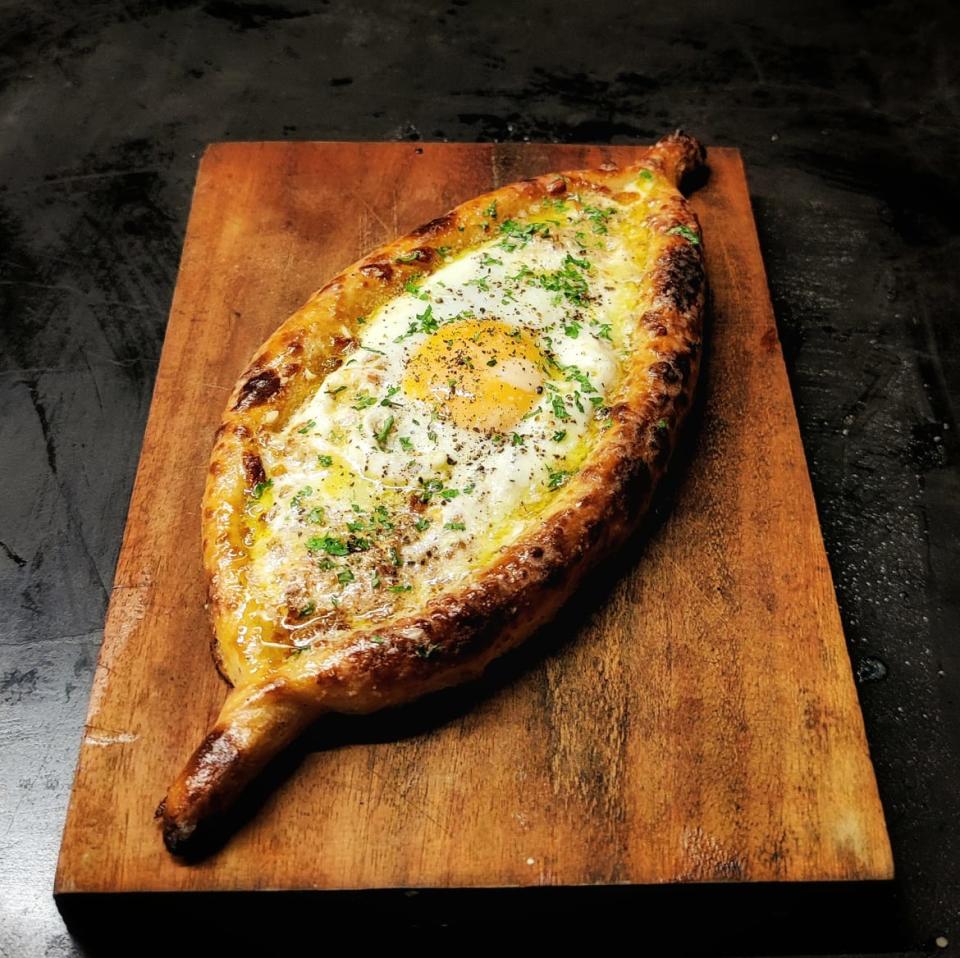
SEE AND BE SEEN
For The Record-Vinyl Bar
Sound matters in this charming little bar and kitchen. FTR is where Buland Shukla, who wears many hats (figuratively) and one hat (literally), highlights his many talents: chef, mixologist, vinyl lover, sound aficionado, and fermentor. At FTR, locally manufactured Indian spirits like feni and mahua find their way into colorful and extremely sippable cocktails. The food is a tribute to all things fermented, with sourdough pides and pizzas, and a surprisingly delicious black garlic tart. Here, conversation and booze flow freely, seamlessly blending with sweet strains of music highlighting his vinyl collection. FTR thrives in the evening, but a morning/afternoon visit gives you coffee, chocolate chip cookies and the chance to meet Buland’s dog, Django.
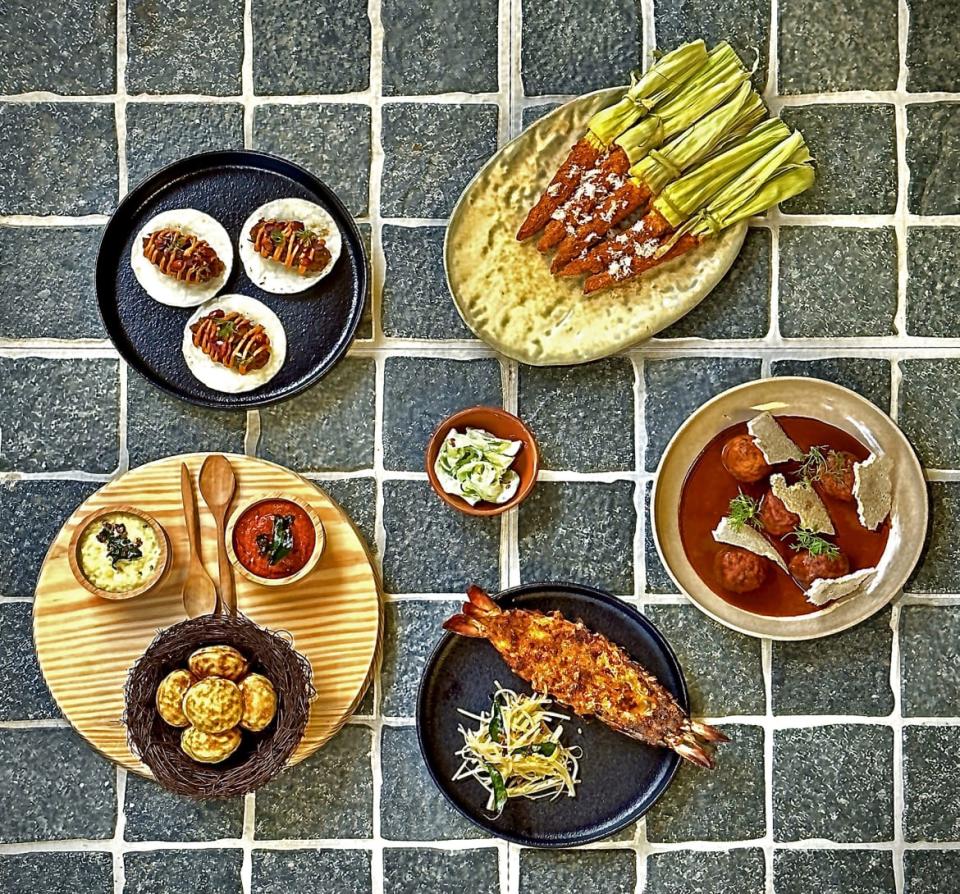
THE HOT SPOT/ONE FOR THE FEED
Hosa
It’s the new kid on the block, promising good South Indian food with a side of art. Except, this kid has a home worthy of being put on magazine covers. An old Goan home has been refurbished to reflect a modern aesthetic with patterned tiles, high ceilings, pockets of foliage, and cozy dining spaces. There’s art on display (and for sale), paintings and sculptures of South Indian artists. The drinks are colorful, tiki-style and photogenic, and teetotallers can partake of house sodas and non-alcoholic cocktails. The food is South Indian but with a contemporary twist. Think hearty bowls of mushroom Pongal (a spiced rice dish made with dal) with black pepper tinged mushroom pakodas (fritters), whole fish steamed in banana leaves, tender mutton pepper roast, curry leaf cured snapper with kokum (garcinia indica), and fat shrimp in a coconut milk gravy dusted with roasted coconut, Madras onions and shrimp powder. In between courses, take a walk in the backyard, which leads to a small stream and gives you a view of the beautiful Siolim church.
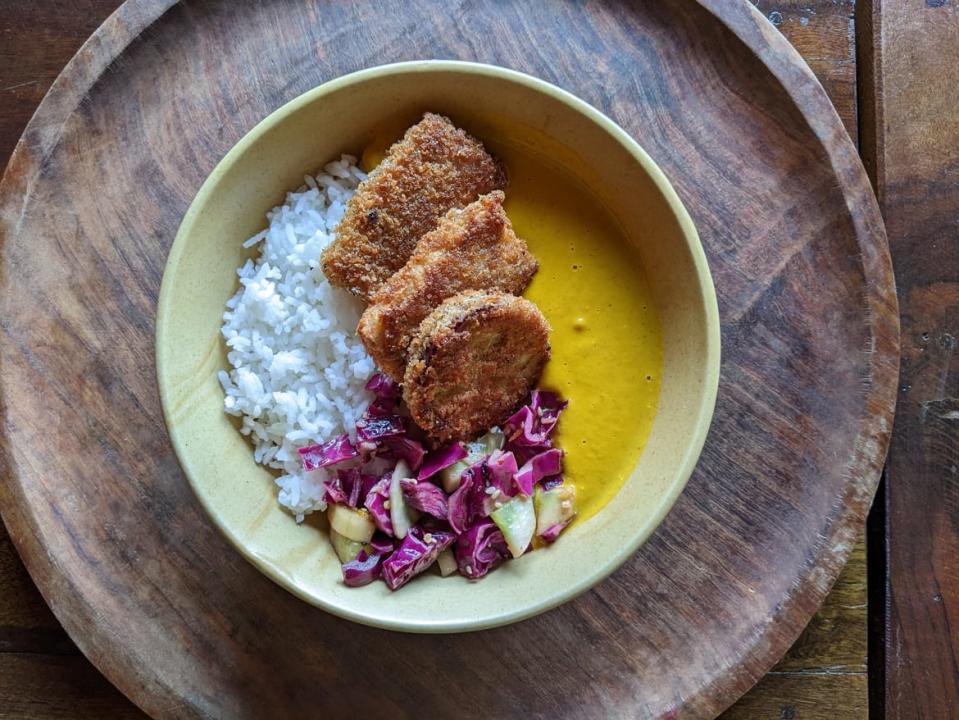
HOLD THE MEAT
Okapi Vegan Kitchen
In an old Goan home in the beautiful village of Aldona, there is a space where desserts rule. These works of art include banana cakes, coconut fudge cups, banoffee pie with a date caramel layer, mango chia pudding jars with compote...all made with sustainably sourced produce and all vegan. Okapi has a simple menu that offers smoothies, salads, sandwiches, coffee, and savory fare like jackfruit poppers, buckwheat pancakes, and foxnut bhel. Okapi just doesn’t just serve food. They host a farmer’s market with minimal waste, locally grown, sustainable packaging and cruelty-free products, workshops, musical nights, and a community dinner. The place is a microcosm of what’s increasingly found across Goa: food places where health is taken seriously, and with a side of conversation about life, health and sustainability.
Get the Daily Beast's biggest scoops and scandals delivered right to your inbox. Sign up now.
Stay informed and gain unlimited access to the Daily Beast's unmatched reporting. Subscribe now.

